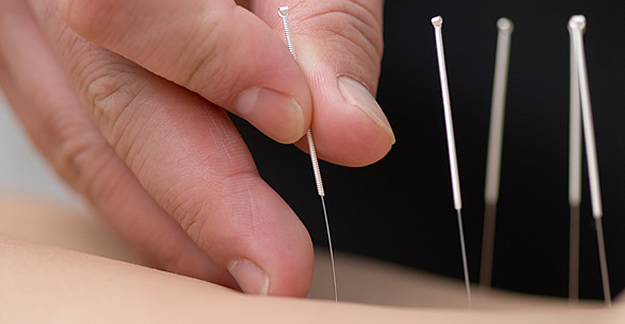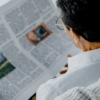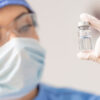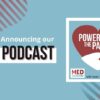(While MedShadow.org primarily focuses on side effects of prescription drugs, we also like to highlight effective alternative therapies. Acupuncture appears to have few side effects and may help alleviate or treat a number of conditions, including pain, infertility, ADHD, nausea, anxiety, insomnia and osteoarthritis. Many patients can also lower their dependence on prescription drugs by using acupuncture.)
Considering Acupuncture
About a year after her son Dominic was born, Erin Perrotta and her husband began trying for a second child. Erin, then 33, was able to conceive easily the first time around, so she expected no problems whatsoever. But four years later, she still wasn’t pregnant, and the physical and emotional side effects of her fertility treatments had left her thoroughly drained. Finally, after three failed attempts at in vitro fertilization (IVF), during which she often felt nauseated, depressed, and bruised from the sometimes painful injections, Erin was ready to give up. “Our doctor basically told us it would be a ‘miracle’ if I got pregnant, so I felt that was it.”
Erin’s husband, however, was persistent and began researching alternative treatments. When he suggested she try acupuncture, Erin was skeptical. But with nothing left to lose, Erin signed up for the 10 acupuncture sessions covered by her insurance. As treatment began, Erin visited a chiropractic physician/certified acupuncturist in Teaneck, NJ, two times a week, with each session lasting about 30 minutes. Several weeks after her sessions ended, Erin was pregnant with her second son. “I couldn’t believe it,” she says, recalling the news. The acupuncture had been relaxing—with no side effects—and after four years of fertility treatment that included three IVF treatments, the baby’s conception truly felt like a “miracle.”
Acupuncture is an ancient form of Chinese medicine, dating back thousands of years. It’s based on the premise that a subtle life energy—or “qi”—circulates through the 12 major energy channels of the body, known as meridians. (The channels are like “roadways” that transport qi to every part of the body, including its internal organs and tissues.) When a person’s qi becomes blocked or imbalanced—through poor nutrition, stress, muscle overuse, infectious disease, an organ’s malfunction, etc.—he or she will experience pain or ill health. In an attempt to unblock or balance the qi, and restore the body to its natural state of health, an acupuncturist will stimulate certain points (acupoints), often by inserting very fine, sterile, stainless-steel needles into them.
Patients with insomnia may not always get complete relief from sleeping pills, while subjecting themselves to the side effects of [sleep] drugs. Michael Jabbour has used acupuncture on such patients, and as their sleep improves, has worked with their physician to incrementally reduce the amount of medication needed. “Over time, our goal is to get them off pharmaceuticals safely and completely,” he says.
Despite its Eastern origins, acupuncture has become a more popular form of treatment in the United States, with more medical doctors and other physicians earning the credentials needed to integrate acupuncture into their practice. According to a National Institutes of Health (NIH) survey performed in 2012, the most recent year for which NIH data on acupuncture use are available, some 4 million adults and 150,000 children had used acupuncture in the previous year. Some experts estimate that at least 10 million acupuncture treatments are administered in a typical year. The number of licensed acupuncturists has also grown steadily and is estimated to be approximately 35,000 practicing in the United States, according to the National Certification Commission for Acupuncture and Oriental Medicine (NCCAOM).
Steven Aung, M.D., O.M.D. (doctor of Oriental medicine), clinical professor of medicine and family medicine at the University of Alberta in Edmonton, is a recognized pioneer in the integration of Western, traditional Chinese, and complementary medicine, who has treated patients with acupuncture for more than 40 years. He agrees with an NIH-financed study that finds acupuncture to be an effective tool in treating osteoarthritis and chronic headaches, back, neck, and shoulder pain. But Dr. Aung has also used acupuncture—along with Western medicine, dietary/lifestyle changes, meditation, and herbs/other complementary practices—to manage a range of conditions, including infertility; respiratory and gastrointestinal illnesses; nausea, pain, and other side effects of chemotherapy; ADHD; and depression and anxiety, in children and adults.
“When administered by a trained practitioner, acupuncture is a safe and painless system of treatment, whose function is to restore the body back to its normal state of health,” he says. In some acute cases (such as mild respiratory illness), patients can see results in just a few sessions. In chronic cases (colitis, heart problems, depression), treatment might extend for a period of months, with follow-up sessions as needed.
Acupuncture also can be used to help patients reduce their need for—or eliminate—certain prescription drugs, says Michael Jabbour, M.S., L.Ac., a licensed acupuncturist in Forest Hills, NY. For example, patients with insomnia may not always get complete relief from sleeping pills, while subjecting themselves to the side effects of the drugs. Jabbour has used acupuncture on such patients, and as their sleep improves, has worked with their physician to incrementally reduce the amount of medication needed. The course of treatment (which might involve one or two weekly visits) could take two weeks, two months, or longer—depending on how long the patient has been on sleep medication, the severity of the condition, and other coexisting factors, he says. “But over time, our goal is to get them off pharmaceuticals safely and completely.”
Research is underway to determine whether there is a role for acupuncture in the treatment of COVID-19. Studies are also underway to evaluate acupuncture’s potential for relieving side effects of medications used in COVID-19 treatment. Traditional Chinese medicine (TCM) practitioners in China are using acupuncture for prevention and treatment of COVID-19. In an August 2020 review in the journal Phytomedicine, researchers from the China Academy of Chinese Medical Sciences declared it “the best choice for the treatment and prevention of COVID-19.” However, the NCCAOM emphasizes that there is no “proven” acupuncture treatment for COVID-19.
If paid for out of pocket, acupuncture can be costly. A 30- to 60-minute session in a community or hospital clinic can range from $50 to $70; while sessions with private practitioners can range between $100 to $130. Some insurance companies will pay for acupuncture, at least partially, if administered by a licensed practitioner or medical doctor. Also, beginning in January 2014, California, New Mexico, Alaska, Maryland, and Washington added acupuncture to their Essential Health Benefits (EHB) package, followed by New Jersey in 2017, and Oregon will begin including it in their EHB in 2022. (EHBs are services insurance companies are mandated to cover under current health care laws.)
About 25% of people who use acupuncture have at least partial insurance coverage for their treatments, according to CDC data reported in 2016. In 2020 the U.S. Centers for Medicare & Medicaid Services began covering acupuncture treatments for chronic low back pain that is not associated with an identifiable cause, such as cancer, infection or inflammation. Up to 12 acupuncture visits over 90 days would be covered, and up to eight more treatments would be paid for if the first 12 lead to pain improvement.
To find a licensed acupuncturist in your area, ask your physician for a referral; contact a reputable organization, such as the American Association of Acupuncture and Oriental Medicine, the American Academy of Medical Acupuncture, or the National Certification Commission for Acupuncture and Oriental Medicine, or go to Acufinder.com. Be aware that beginning in 2020, due to COVID-19 many acupuncture clinics and practices had to cut back on services in order to comply with social distancing requirements.
Child-Friendly Acupuncture
Is acupuncture safe for children and teens? According to researchers at the NIH, the answer is a definite yes, if administered by a properly licensed practitioner. David Miller, M.D., L.Ac., medical director of integrative medicine pediatrics at University Hospitals in Cleveland, uses acupuncture routinely. Dr. Miller treats everything from chronic ear infections (without the use of antibiotics or surgery), to skin conditions, to mood disorders, to headaches as part of a holistic plan that includes changes in diet and lifestyle, vitamins, Chinese herbs, and other complementary medicines. Dr. Miller even uses certain types of “needle-less acupuncture” that are more conducive to kids. One such method is tui na, a type of Chinese massage that stimulates acupressure points in the body. Some tui na techniques can be learned easily, says Dr. Miller, and can be done at home by parents as part of their child’s overall treatment.







